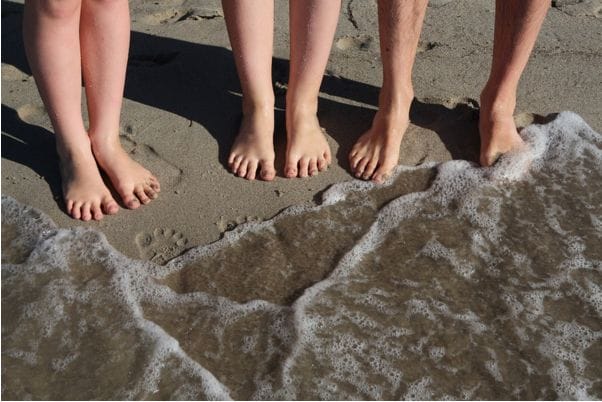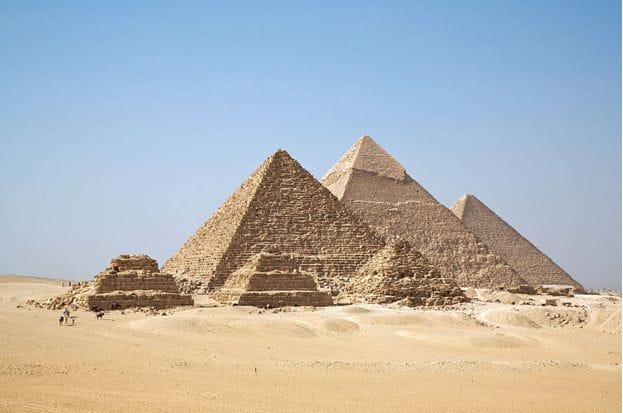Travel photography lets you capture amazing memories from your trips. I’ve learned some great tricks over the years to take better photos when I travel. These tips can help you snap pics you’ll love looking back on for years to come.
The key to great travel photos is to focus on lighting, composition, and telling a story with your images. I always try to shoot during the “golden hours” right after sunrise or before sunset for the best natural light. I also look for interesting angles and framing to make my shots more dynamic.
Getting to know your camera gear before your trip is super helpful. I practice with different settings at home so I’m ready to capture those fleeting moments on the road. Learning some basic editing skills can also take your photos to the next level once you’re back home.
Key Takeaways
- Mastering light and composition creates more compelling travel photos
- Practicing with your camera before trips helps capture fleeting moments
- Post-processing skills can enhance your travel images
Understanding the Basics of Travel Photography
Travel photography captures the essence of places and cultures. It tells stories through images and documents experiences in a visual way.
The Essence of Travel Photography
Travel photography is about capturing moments and memories. I focus on showing the spirit of a place through my lens. This means taking photos of beautiful locations as well as local people and customs.
I try to convey the feeling of being there. This might involve:
- Capturing candid street scenes
- Photographing local foods and markets
- Showcasing unique architecture
- Highlighting natural landscapes
The key is to be observant. I look for details that make a place special. Sometimes it’s the small things that tell the biggest stories.
Types of Travel Photography
There are many types of travel photography. Each focuses on different aspects of a place or journey.
- Landscape: Capturing natural scenery and vistas
- Portrait: Photographing local people and their expressions
- Street: Documenting everyday life in public spaces
- Architecture: Showcasing buildings and structures
- Food: Highlighting local cuisine and dining experiences
Documentary photography is also important in travel. It tells real stories about places and people. I aim to show things as they truly are, without staging or altering scenes.
Mastering Your Camera
Getting familiar with your camera is key to capturing amazing travel photos. I’ll cover the essentials of knowing your gear and compare DSLR and mirrorless cameras.
Knowing Your Gear
I always make sure to learn my camera inside and out before a trip. This means practicing with all the buttons, dials, and menus. I focus on mastering:
- Aperture, shutter speed, and ISO settings
- Autofocus modes and points
- Exposure compensation
- White balance options
I also get comfortable switching between manual and auto modes quickly. This helps me adapt to changing conditions on the go.
It’s smart to bring backup batteries and memory cards. I keep my gear clean and protected with a good camera bag and lens cloths.
DSLR vs Mirrorless
When choosing between DSLR and mirrorless cameras, I consider these factors:
- Size and weight
- Battery life
- Lens options
- Autofocus speed
DSLRs often have better battery life and more lens choices. Mirrorless cameras are usually smaller and lighter, making them great for travel.
I find mirrorless cameras offer better video capabilities and silent shooting modes. This is handy for capturing candid moments without disturbing people.
Both can take excellent photos. The choice comes down to personal preference and shooting style.
Composition and Framing Techniques
Good photos need more than just a nice camera. How you set up your shots makes a big difference. I’ll show you some key ways to make your travel photos look better.
The Rule of Thirds Explained
The rule of thirds is a simple but powerful tool. I imagine my photo split into a 3×3 grid. The key parts of my image should be along these lines or where they cross. This creates balance and interest.
For a sunset, I might put the horizon on the bottom third line. The sun could go where two lines meet. This looks more natural than putting everything in the middle.
Using the rule of thirds can make landscapes, portraits, and street scenes more eye-catching. It’s an easy way to improve almost any shot.
Using Leading Lines
Leading lines guide the eye through a photo. I look for roads, rivers, or fences that point to my main subject. These lines create depth and pull the viewer in.
In cities, I use building edges or street markings. In nature, I find tree lines or mountain ridges. The key is to make these lines lead to something interesting.
Sometimes I get low or move to the side to find the best angle. This technique works great for both wide shots and close-ups. It adds structure and makes photos more engaging.
Incorporating the Human Element
Adding people to travel photos tells a story. I look for ways to include locals or other travelers in my shots. This gives scale and brings scenes to life.
I might capture a person walking down a narrow street or looking out at a view. Their presence helps viewers imagine being there. It also shows the culture and daily life of a place.
Including people in photos can be as simple as waiting for someone to walk into my frame. Or I ask permission for a portrait. The human element adds emotion and connection to travel images.
Working with Light
Light is key in travel photography. I’ll share tips on using golden hour and blue hour to capture stunning images. These special times of day offer unique lighting that can transform your photos.
Harnessing the Golden Hour
Golden hour happens just after sunrise and before sunset. I find this time perfect for warm, soft light. It creates a golden glow that flatters subjects and landscapes.
During golden hour, I look for long shadows. These add depth to my photos. I also use backlighting to create a dreamy effect.
To make the most of golden hour, I plan ahead. I scout locations beforehand. This way, I’m ready when the light is right. I use apps to track sunrise and sunset times.
Golden hour photography can be tricky. The light changes fast. I stay flexible and work quickly to capture the best shots.
The Mystique of Blue Hour
Blue hour occurs before sunrise and after sunset. It bathes scenes in a cool, ethereal light. This time is great for city shots and landscapes.
I use a tripod during blue hour. The low light demands slower shutter speeds. This helps me keep my images sharp.
Blue hour is ideal for capturing cityscapes. The mix of natural and artificial light creates a magical effect. I look for reflections in water or glass buildings.
For landscapes, blue hour adds a serene mood. I often include the moon or stars in these shots. It’s a chance to get creative with long exposures.
I always check the weather before shooting blue hour. Clear skies work best for this type of photography.
Capturing the Culture

Travel photography lets us share local traditions and ways of life. I’ve found that focusing on streets, buildings, and people helps capture a place’s unique spirit.
Street and Architecture Photography
I always start by exploring city streets and squares. They’re filled with interesting sights that show daily life. I look for eye-catching buildings, colorful markets, and local shops. These scenes give a feel for the area’s character.
When shooting architecture, I try different angles. Getting low or finding high vantage points can make photos more striking. I pay attention to details like doorways, windows, and decorative elements. They often reveal cultural influences.
I also watch for interactions between people and their surroundings. A vendor arranging fruit at a market stall or kids playing in a plaza can tell a story about local customs.
Photographing People and Candid Moments
Capturing portraits of locals is a great way to show a culture’s human side. I always ask permission before taking someone’s photo. A smile and gestures can bridge language gaps.
For candid shots, I look for lively spots where people gather. Parks, cafes, and public events are good places to start. I use a longer lens to keep some distance and not disturb natural moments.
I try to capture daily activities that highlight local customs. This might be traditional cooking methods, artisans at work, or religious practices. These images give viewers insight into the culture’s values and traditions.
When photographing people, I aim to show dignity and respect. I avoid harmful stereotypes and try to present a balanced view of the community.
Wildlife and Landscape Adventures
Capturing wildlife and landscapes requires patience, skill, and the right techniques. I’ve learned some key tips for getting amazing shots in nature.
Tips for Wildlife Photography
When photographing animals, I always use a long lens to keep my distance. This helps me avoid disturbing the wildlife. I set my camera to a fast shutter speed, usually 1/1000 or faster, to freeze motion.
For sharp images, I use continuous autofocus and burst mode. This lets me track moving subjects and get multiple shots. I also pay attention to the background, trying to keep it simple and uncluttered.
Patience is key. I often wait hours for the perfect moment. When it comes, I’m ready with my camera settings dialed in. I also research animal behavior to anticipate good photo opportunities.
Landscape Photography Insights
For landscapes, I always bring a sturdy tripod. This allows me to use slower shutter speeds for smooth water or star trails. I also use a wide-angle lens to capture expansive scenes.
Composition is crucial. I look for leading lines to draw the viewer’s eye through the image. Natural features like rivers or roads work well for this. I also use the rule of thirds to place key elements off-center.
Lighting makes a huge difference. I prefer shooting during the “golden hours” just after sunrise or before sunset. This warm, soft light adds depth and drama to landscapes.
I often use a graduated neutral density filter. This balances exposure between bright skies and darker foregrounds.
Practical Travel Photography Tips
Taking great travel photos requires the right gear and know-how. I’ll share tips on choosing equipment and packing smart to capture amazing shots on your next trip.
Choosing the Best Camera and Lens
When it comes to travel photography, I recommend a versatile camera that’s easy to carry. Mirrorless cameras offer a good balance of quality and portability. For beginners, an entry-level DSLR can also work well.
Lens choice is crucial. I always pack a zoom lens for flexibility. A 24-70mm lens covers most situations. For distant subjects, I bring a telephoto zoom like a 70-200mm.
Prime lenses are great for low light and portraits. A 35mm or 50mm lens can be perfect for street scenes.
Consider your travel style and destinations when choosing gear. Weatherproofing is important for outdoor adventures.
Packing the Right Photography Equipment
I’ve learned to pack light but smart. A lightweight tripod is essential for low-light shots and long exposures. Look for one that’s sturdy yet compact.
Extra batteries and memory cards are must-haves. I always bring at least twice as many as I think I’ll need.
A camera cleaning kit helps protect your gear. Include microfiber cloths, a blower, and sensor cleaning swabs.
Don’t forget a comfortable camera bag. I prefer backpacks with good padding and easy access.
For rainy destinations, pack a waterproof camera cover. A polarizing filter can enhance skies and reduce glare.
Advanced Techniques and Post-Processing
Taking great travel photos goes beyond just snapping pictures. I’ll cover some advanced methods and editing tips to take your images to the next level.
Astrophotography and Long Exposures
I love capturing the night sky when I travel. For astrophotography, I use a sturdy tripod and set my camera to manual mode with a wide aperture (f/2.8 or wider). I bump up the ISO to 1600-3200 and use a long shutter speed of 15-30 seconds. This lets in enough light to capture stars and the Milky Way.
For long exposures, I use neutral density filters to shoot waterfalls or light trails. I set a low ISO (100-400) and small aperture (f/8-f/16) for sharp images. Shutter speeds of 1-30 seconds create motion blur in flowing water or moving lights.
Key gear for these techniques:
- Sturdy tripod
- Remote shutter release
- Neutral density filters
Editing Your Photos for Impact
Post-processing is crucial for creating stunning travel images. I start by adjusting exposure and white balance to get natural-looking colors. Then I enhance contrast and vibrance to make scenes pop.
For portraits, I use skin smoothing and dodge/burn tools to flatter subjects. With landscapes, I might blend multiple exposures to capture detail in highlights and shadows.
I crop images to improve composition and remove distractions. A straight horizon is a must – I use the crop tool’s grid overlay as a guide.
Favorite editing techniques:
- Color grading for mood
- Selective sharpening
- Noise reduction for night shots
- Subtle vignetting
Frequently Asked Questions
Travel photography involves key skills and techniques. I’ll cover essential tips for beginners, composition, smartphone use, creative ideas, camera settings, and lighting in various environments.
What are essential techniques beginners should know for travel photography?
Beginners should focus on the rule of thirds for balanced shots. I recommend shooting at sunrise for soft, warm light. Practice framing your subjects and try different angles.
Learn to use your camera’s manual mode. This gives you control over settings like aperture and shutter speed.
How can you improve your travel photo composition?
Look for leading lines to guide the viewer’s eye. I find natural or man-made lines like roads or rivers work well.
Use foreground elements to add depth. A flower or rock in the foreground can make landscapes more interesting.
Try the golden ratio for a pleasing layout. It’s similar to the rule of thirds but with a slight twist.
In what ways can a smartphone be effectively used for travel photography?
Smartphones are great for quick, spontaneous shots. Use the HDR mode for high-contrast scenes.
Try panorama mode for wide landscapes. It’s perfect for capturing expansive views.
Use your phone’s burst mode for action shots. It helps catch the perfect moment in fast-moving scenes.
What are some creative travel photography ideas to try?
Experiment with reflections in water or glass. They can add a unique twist to common scenes.
Try light painting at night. Use a long exposure and move a light source to create interesting effects.
Capture local culture through street photography. Focus on candid moments and daily life.
What camera settings are recommended for various travel photography scenarios?
For landscapes, use a small aperture (f/11-f/16) for wide depth of field. Set a low ISO to reduce noise.
In low light, increase ISO and use a wider aperture. A tripod helps keep shots sharp.
For action shots, use a fast shutter speed. I recommend at least 1/500th of a second to freeze motion.
How do you manage lighting and exposure when taking photos in different travel environments?
In bright sunlight, use a polarizing filter. It reduces glare and enhances colors.
For indoor shots, increase ISO and use a wider aperture. This helps capture more light.
In mixed lighting, use your camera’s spot metering mode. It helps expose for the main subject correctly.




